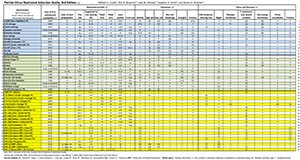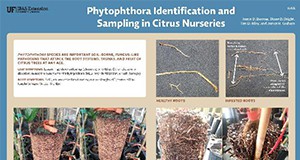
Phytophthora species are important soil-borne, fungus-like pathogens that attack the root systems, trunk, and fruit of citrus trees at any age. The front of this identification sheet includes images of healthy and infested roots and descriptions of leaf and root symptoms. The back lists sampling procedures: soil collection, soil testing, and diagnosing phytophthora. Written by Jamie D. Burrow, Diane B. Bright, Tim D. Riley, and James H. Graham, and published by the UF Department of Soil and Water Science, July 2015.
http://edis.ifas.ufl.edu/ss645
Category: Citrus
Postbloom Fruit Drop (PFD) Identification and Management
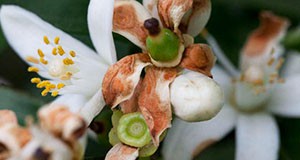
This two-sided ID card is idea for growers working in the field trying to identify or manage postbloom fruit drop (PFD) in citrus. The ID card includes photos of blooms affected by PFD and photos of healthy blooms for comparison. The card also includes facts and tips for managing PFD. Written by Megan M. Dewdney, Natalia A. Peres, and Jamie D. Burrow, and published by the UF Department of Plant Pathology, July 2015.
http://edis.ifas.ufl.edu/pp318
Black Scale Saissetia oleae (Olivier, 1791) (Insecta: Hemiptera: Coccoidea: Coccidae)
 The black scale is an important pest of citrus and olive trees. Originally from South Africa, this scale is now distributed worldwide. In Florida, black scale is found on citrus, cultivated olive, avocado, and many popular landscape plants. It is likely that black scale, like many invasive pests, was imported to the United States on infested nursery plants. Based on their small size and the unique life history of scale insects, these insects are difficult to detect and control. This 4-page fact sheet was written by Morgan A. Byron, Jennifer L. Gillett-Kaufman, and Sandra A. Allan, and published by the UF Department of Entomology and Nematology, March 2015. (Photo credit: Lyle Buss, UF/IFAS)
The black scale is an important pest of citrus and olive trees. Originally from South Africa, this scale is now distributed worldwide. In Florida, black scale is found on citrus, cultivated olive, avocado, and many popular landscape plants. It is likely that black scale, like many invasive pests, was imported to the United States on infested nursery plants. Based on their small size and the unique life history of scale insects, these insects are difficult to detect and control. This 4-page fact sheet was written by Morgan A. Byron, Jennifer L. Gillett-Kaufman, and Sandra A. Allan, and published by the UF Department of Entomology and Nematology, March 2015. (Photo credit: Lyle Buss, UF/IFAS)
http://edis.ifas.ufl.edu/in1082
Summary of 2013/14 Production Costs for Indian River Fresh Market Grapefruit and Southwest Florida Juice Oranges
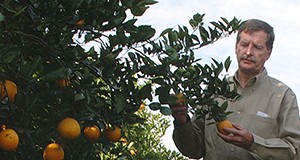
This 10-page report, developed through interviews with growers who managed their own citrus groves, outlines the cost of production budgets for fresh grapefruit and juice oranges grown during the 2013/14 season. The Florida citrus industry is on a steep learning curve as it collectively tries to maintain economically sustainable fruit yields from HLB-infected trees. Growers are experimenting with new materials and management strategies to reduce psyllid populations and improve a tree’s overall nutritional health. As a result, production costs have increased threefold since 2004. Between the 2012/13 and the 2013/14 seasons, production costs increased 30% and 34% for fresh grapefruit and juice oranges, respectively. Since 2004, production costs for fresh grapefruit have increased 182%, while costs to grow juice oranges have increased 211%.
Written by Fritz Roka, Ariel Singerman, and Ronald Muraro, and published by the UF Department of Food and Resource Economics, July 2015.
http://edis.ifas.ufl.edu/fe968
Florida Citrus Rootstock Selection Guide, 3rd Edition
Information about citrus rootstocks has become an important part of understanding and managing citrus greening (Huanglongbing or HLB). This selection guide covers 20 characteristics of 45 citrus rootstocks and explains its methodology in detail. This 3-page fact sheet was written by William S. Castle, Kim D. Bowman, Jude W. Grosser, Stephen H. Futch, and James H. Graham and published by the UF Department of Horticultural Sciences, May 2015.
http://edis.ifas.ufl.edu/hs1260
Tree Assistance Program for Florida Citrus Greening
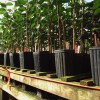 In September 2014, the USDA Farm Service Agency (FSA) announced additional support for commercial Florida citrus growers to manage greening, in the form of an expansion of the Tree Assistance Program (TAP). The original program assisted growers in the event the loss occurred within a single year due to a natural disaster such as a hurricane. The expanded TAP recognizes citrus greening (Huanglongbing, or HLB). The program provides growers cost-sharing financial assistance to replace trees that meet a mortality criterion within a time period of up to six years. This 4-page fact sheet describes eligibility requirements, how the program works, and how to calculate payments. Written by Ariel Singerman and Fritz Roka, and published by the UF Department of Food and Resource Economics, April 2015.
In September 2014, the USDA Farm Service Agency (FSA) announced additional support for commercial Florida citrus growers to manage greening, in the form of an expansion of the Tree Assistance Program (TAP). The original program assisted growers in the event the loss occurred within a single year due to a natural disaster such as a hurricane. The expanded TAP recognizes citrus greening (Huanglongbing, or HLB). The program provides growers cost-sharing financial assistance to replace trees that meet a mortality criterion within a time period of up to six years. This 4-page fact sheet describes eligibility requirements, how the program works, and how to calculate payments. Written by Ariel Singerman and Fritz Roka, and published by the UF Department of Food and Resource Economics, April 2015.
http://edis.ifas.ufl.edu/fe966
Estimating Willingness to Pay for New Mandarin Cultivars: A Revealed Preference Approach
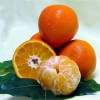 California has overtaken Florida to become the major US domestic mandarin producer. Despite a shift in consumer preferences toward the ‘Clementine’ mandarin that is widely grown in California, this cultivar is not well adapted to the subtropical climate of Florida. But in 2009, the University of Florida introduced the ‘Sugar Belle’, a cross between the ‘Clementine’ mandarin and the ‘Minneola’ tangelo. Survey test results showed that subjects preferred this new cultivar in terms of overall flavor, sweetness, acidity, and juiciness. survey test results showed that the Florida ‘Sugar Belle’ was preferred over the California ‘Clementine’ mandarin and the Florida ‘Murcott’ mandarin (aka Honey mandarin) in terms of overall flavor, sweetness, acidity, and juiciness. To determine consumer willingness to pay for specific attributes, UF/IFAS economists combined sensory evaluation and experimental auctions in a unique way, by comparing two different types of ‘Sugar Belle’ (SB1 and SB2) with the main competing product to identify the most desirable characteristics and to determine the best marketing and pricing strategy. This 6-page fact sheet was written by Xiang Bi, Lisa House, Frederick Gmitter, and Zhifeng Gao, and published by the UF Department of Food and Resource Economics, September 2014.
California has overtaken Florida to become the major US domestic mandarin producer. Despite a shift in consumer preferences toward the ‘Clementine’ mandarin that is widely grown in California, this cultivar is not well adapted to the subtropical climate of Florida. But in 2009, the University of Florida introduced the ‘Sugar Belle’, a cross between the ‘Clementine’ mandarin and the ‘Minneola’ tangelo. Survey test results showed that subjects preferred this new cultivar in terms of overall flavor, sweetness, acidity, and juiciness. survey test results showed that the Florida ‘Sugar Belle’ was preferred over the California ‘Clementine’ mandarin and the Florida ‘Murcott’ mandarin (aka Honey mandarin) in terms of overall flavor, sweetness, acidity, and juiciness. To determine consumer willingness to pay for specific attributes, UF/IFAS economists combined sensory evaluation and experimental auctions in a unique way, by comparing two different types of ‘Sugar Belle’ (SB1 and SB2) with the main competing product to identify the most desirable characteristics and to determine the best marketing and pricing strategy. This 6-page fact sheet was written by Xiang Bi, Lisa House, Frederick Gmitter, and Zhifeng Gao, and published by the UF Department of Food and Resource Economics, September 2014.
http://edis.ifas.ufl.edu/fe955
Floridians' Perceptions of GMOs: GMOs and Florida Citrus
 Worldwide and in Florida, food-related issues such as food safety, food security, and use of new food technologies continue to be top concerns. Among the food-related issues are concerns about consuming the products from transgenic plants, often referred to as “GMOs.” This 4-page fact sheet is intended to help Extension faculty understand public perceptions regarding the use of genetic engineering to combat citrus greening. Extension faculty can use this understanding of public perceptions as they develop and deliver programming for clientele. Written by Nicole M. W. Dodds, Laura M. Gorham, and Joy N. Rumble, and published by the UF Department of Agricultural Education and Communication, October 2014.
Worldwide and in Florida, food-related issues such as food safety, food security, and use of new food technologies continue to be top concerns. Among the food-related issues are concerns about consuming the products from transgenic plants, often referred to as “GMOs.” This 4-page fact sheet is intended to help Extension faculty understand public perceptions regarding the use of genetic engineering to combat citrus greening. Extension faculty can use this understanding of public perceptions as they develop and deliver programming for clientele. Written by Nicole M. W. Dodds, Laura M. Gorham, and Joy N. Rumble, and published by the UF Department of Agricultural Education and Communication, October 2014.
http://edis.ifas.ufl.edu/wc182
Citrus Mechanical Harvesting Systems–Continuous Canopy Shakers
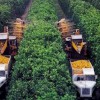 Mechanization has been the hallmark of American agriculture. Nearly 100 percent of the agronomic crops grown in the United States are plowed, planted, and harvested with mechanical equipment. Mechanical harvesting equipment for sweet oranges has been studied extensively since the 1970s and during the 2005/06 harvest season, trunk and canopy shakers harvested more than 36,000 acres of Florida citrus. Mechanically harvested citrus acreage, however, has decreased significantly since 2005. During the 2012/13 season, less than 9,000 acres were mechanically harvested (FDOC 2013). Nevertheless, development and adoption of mechanical harvesting technology is important to the long-term economic sustainability of the Florida orange juice processing industry. This 5-page fact sheet describing canopy shakerswas written by F.M. Roka, R.J. Ehsani, S.H. Futch, and B.R. Hyman, and published by the UF Department of Food and Resource Economics, August 2014.
Mechanization has been the hallmark of American agriculture. Nearly 100 percent of the agronomic crops grown in the United States are plowed, planted, and harvested with mechanical equipment. Mechanical harvesting equipment for sweet oranges has been studied extensively since the 1970s and during the 2005/06 harvest season, trunk and canopy shakers harvested more than 36,000 acres of Florida citrus. Mechanically harvested citrus acreage, however, has decreased significantly since 2005. During the 2012/13 season, less than 9,000 acres were mechanically harvested (FDOC 2013). Nevertheless, development and adoption of mechanical harvesting technology is important to the long-term economic sustainability of the Florida orange juice processing industry. This 5-page fact sheet describing canopy shakerswas written by F.M. Roka, R.J. Ehsani, S.H. Futch, and B.R. Hyman, and published by the UF Department of Food and Resource Economics, August 2014.
http://edis.ifas.ufl.edu/fe951
Citrus Mechanical Harvesting Systems–Trunk Shakers
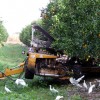 While citrus growers are rightfully concerned about restoring the health of their HLB-infected trees, more study and consideration should be given to mechanical harvesting. The costs to grow and harvest citrus have been escalating significantly since 2006, and the cost savings potential from mechanical harvesting technologies can help Florida growers remain economically viable. This 4-page fact sheet was written by F.M. Roka, R.J. Ehsani, S.H. Futch, and B.R. Hyman, and published by the UF Department of Food and Resource Economics, August 2014.
While citrus growers are rightfully concerned about restoring the health of their HLB-infected trees, more study and consideration should be given to mechanical harvesting. The costs to grow and harvest citrus have been escalating significantly since 2006, and the cost savings potential from mechanical harvesting technologies can help Florida growers remain economically viable. This 4-page fact sheet was written by F.M. Roka, R.J. Ehsani, S.H. Futch, and B.R. Hyman, and published by the UF Department of Food and Resource Economics, August 2014.
http://edis.ifas.ufl.edu/fe950
Florida Citrus Outlook 2013/14 Season
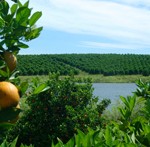 This 24-page report provides supply, demand, and price projections of Florida citrus for the 2013/14 season based on the November 2013 forecast of the 2013/14 Florida citrus crop, by variety. Projections are for Florida orange juice and grapefruit juice pack, movement, and ending inventory, along with estimates of US consumption and retail sales of OJ and GJ, preliminary on-tree price estimates, and Brazil’s OJ outlook (given its bearing on Florida’s OJ situation). Written by Matthew J. Salois, and published by the UF Department of Food and Resource Economics, September 2014.
This 24-page report provides supply, demand, and price projections of Florida citrus for the 2013/14 season based on the November 2013 forecast of the 2013/14 Florida citrus crop, by variety. Projections are for Florida orange juice and grapefruit juice pack, movement, and ending inventory, along with estimates of US consumption and retail sales of OJ and GJ, preliminary on-tree price estimates, and Brazil’s OJ outlook (given its bearing on Florida’s OJ situation). Written by Matthew J. Salois, and published by the UF Department of Food and Resource Economics, September 2014.
http://edis.ifas.ufl.edu/fe945
Analyzing Production Records of Commercial Sweet Orange Blocks to Measure Effects of Mechanical Harvesting on Long-Term Production and Tree Health
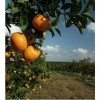 Ever since mechanical harvesting systems were introduced in the 1960s, growers expressed serious concerns over the potential negative impact mechanical harvesting could have on their trees. A study was undertaken in 2010 to analyze grower production data and compare whether mechanical harvesting had an adverse effect on fruit yield or shortened tree longevity as compared to hand harvesting. The purpose of this article is to describe how the study was organized and to summarize its results and conclusions. This 4-page fact sheet was written by Fritz M. Roka, Lisa H. House, and Katrina R. Mosley, and published by the UF Department of Food and Resource Economics, May 2014.
Ever since mechanical harvesting systems were introduced in the 1960s, growers expressed serious concerns over the potential negative impact mechanical harvesting could have on their trees. A study was undertaken in 2010 to analyze grower production data and compare whether mechanical harvesting had an adverse effect on fruit yield or shortened tree longevity as compared to hand harvesting. The purpose of this article is to describe how the study was organized and to summarize its results and conclusions. This 4-page fact sheet was written by Fritz M. Roka, Lisa H. House, and Katrina R. Mosley, and published by the UF Department of Food and Resource Economics, May 2014.
http://edis.ifas.ufl.edu/fe949
Comparison of Soil Test Extractants for Available Soil Phosphorus in High pH Sandy Soils of South Florida
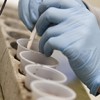 This document addresses the selection of soil nutrient extractants in high pH soils and discusses their relationship to both nutrition and fertilizer management. This document’s objective is to describe the impact of selected soil extractants on nutrient management and their ability to determine soil phosphorus availability. The target audience for this series dealing with citrus nutrition includes Certified Crop Advisers; citrus, vegetable, and sugarcane producers; fertilizer dealers; and other parties interested in crop fertilization practices. This 4-page fact sheet was written by Kelly T. Morgan and Kamal Mahmoud, and published by the UF Department of Soil and Water Science, December 2014.
This document addresses the selection of soil nutrient extractants in high pH soils and discusses their relationship to both nutrition and fertilizer management. This document’s objective is to describe the impact of selected soil extractants on nutrient management and their ability to determine soil phosphorus availability. The target audience for this series dealing with citrus nutrition includes Certified Crop Advisers; citrus, vegetable, and sugarcane producers; fertilizer dealers; and other parties interested in crop fertilization practices. This 4-page fact sheet was written by Kelly T. Morgan and Kamal Mahmoud, and published by the UF Department of Soil and Water Science, December 2014.
http://edis.ifas.ufl.edu/ss613
Boron (B) and Chlorine (Cl) for Citrus Trees
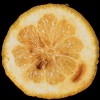 Since mineral nutrition is a major factor in maximizing yield of high-quality fruit, understanding the functions of mineral elements, diagnosing nutrient deficiencies, and providing needed fertilizers are essential. This 4-page fact sheet describes and discusses boron (B) and chlorine (Cl) deficiencies, functions, and recommended practices to alleviate nutritional problems. Written by Mongi Zekri and Tom Obreza , and published by the UF Department of Soil and Water Science, March 2014.
Since mineral nutrition is a major factor in maximizing yield of high-quality fruit, understanding the functions of mineral elements, diagnosing nutrient deficiencies, and providing needed fertilizers are essential. This 4-page fact sheet describes and discusses boron (B) and chlorine (Cl) deficiencies, functions, and recommended practices to alleviate nutritional problems. Written by Mongi Zekri and Tom Obreza , and published by the UF Department of Soil and Water Science, March 2014.
http://edis.ifas.ufl.edu/ss619
Guia de gestion de plagas para citricos en la Florida 2014: Interpretacion de los enunciados de PPE en las etiquetas de pesticidas
 Este documento le ayuda a comprender los enunciados revisados para Equipo de Protección Personal (PPE) que ahora hacen parte de las etiquetas de los productos pesticidas utilizados en las fincas, bosques, viveros e invernaderos. This 3-page fact sheet is a Spanish-language translation of 2014 Florida Citrus Pest Management Guide: Interpreting PPE Statements on Pesticide Labels. Written by O. Norman Nesheim, Frederick M. Fishel, and Tatiana Sanchez, and published by the UF Department of Agronomy, September 2013.
Este documento le ayuda a comprender los enunciados revisados para Equipo de Protección Personal (PPE) que ahora hacen parte de las etiquetas de los productos pesticidas utilizados en las fincas, bosques, viveros e invernaderos. This 3-page fact sheet is a Spanish-language translation of 2014 Florida Citrus Pest Management Guide: Interpreting PPE Statements on Pesticide Labels. Written by O. Norman Nesheim, Frederick M. Fishel, and Tatiana Sanchez, and published by the UF Department of Agronomy, September 2013.
http://edis.ifas.ufl.edu/cg089
Molybdenum (Mo) and Nickel (Ni) for Citrus Trees
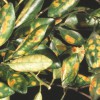 Since mineral nutrition is a major factor in maximizing yield of high quality fruit, understanding the functions of mineral elements, diagnosing nutrient deficiencies, and providing needed fertilizers are essential. This publication describes and discusses molybdenum (Mo) and nickel (Ni) deficiencies, functions, and recommended practices to alleviate nutritional problems.This 3-page fact sheet was written by Mongi Zekri and Tom Obreza , and published by the UF Department of Soil and Water Science, March 2014.
Since mineral nutrition is a major factor in maximizing yield of high quality fruit, understanding the functions of mineral elements, diagnosing nutrient deficiencies, and providing needed fertilizers are essential. This publication describes and discusses molybdenum (Mo) and nickel (Ni) deficiencies, functions, and recommended practices to alleviate nutritional problems.This 3-page fact sheet was written by Mongi Zekri and Tom Obreza , and published by the UF Department of Soil and Water Science, March 2014.
http://edis.ifas.ufl.edu/ss618
Iron (Fe) and Copper (Cu) for Citrus Trees
 Since mineral nutrition is a major factor in maximizing yield of high-quality fruit, understanding the functions of mineral elements, diagnosing nutrient deficiencies, and providing needed fertilizers are essential. This publication describes and discusses iron (Fe) and copper (Cu) deficiencies, functions, and recommended practices to alleviate nutritional problems. This 7-page fact sheet was written by Mongi Zekri and Tom Obreza, and published by the UF Department of Soil and Water Science, March 2014.
Since mineral nutrition is a major factor in maximizing yield of high-quality fruit, understanding the functions of mineral elements, diagnosing nutrient deficiencies, and providing needed fertilizers are essential. This publication describes and discusses iron (Fe) and copper (Cu) deficiencies, functions, and recommended practices to alleviate nutritional problems. This 7-page fact sheet was written by Mongi Zekri and Tom Obreza, and published by the UF Department of Soil and Water Science, March 2014.
http://edis.ifas.ufl.edu/ss617
Manganese (Mn) and Zinc (Zn) for Citrus Trees
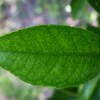 Since mineral nutrition is a major factor in maximizing yield of high-quality fruit, understanding the functions of mineral elements, diagnosing nutrient deficiencies, and providing needed fertilizers are essential. This publication describes and discusses manganese (Mn) and zinc (Zn) deficiencies, functions, and recommended practices to alleviate nutritional problems. This 5-page fact sheet was written by Mongi Zekri and Tom Obreza , and published by the UF Department of Soil and Water Science, March 2014.
Since mineral nutrition is a major factor in maximizing yield of high-quality fruit, understanding the functions of mineral elements, diagnosing nutrient deficiencies, and providing needed fertilizers are essential. This publication describes and discusses manganese (Mn) and zinc (Zn) deficiencies, functions, and recommended practices to alleviate nutritional problems. This 5-page fact sheet was written by Mongi Zekri and Tom Obreza , and published by the UF Department of Soil and Water Science, March 2014.
http://edis.ifas.ufl.edu/ss616
Citrus Greening and Citrus Tree Planting in Florida
 This 4-page fact sheet examines the impact of the presence of citrus greening on new tree plantings in the Florida citrus industry. Sweet oranges are by far the most important citrus variety grown in Florida, so the analysis is limited to sweet orange plantings. Because citrus greening impacts citrus producers through reduced yield, increased mortality, and increased cost of production, it is expected that the presence of citrus greening has had an adverse impact on the willingness of growers to invest in new trees. Written by Thomas H. Spreen and Jean-Paul Baldwin, and published by the UF Department of Food and Resource Economics, January 2014.
This 4-page fact sheet examines the impact of the presence of citrus greening on new tree plantings in the Florida citrus industry. Sweet oranges are by far the most important citrus variety grown in Florida, so the analysis is limited to sweet orange plantings. Because citrus greening impacts citrus producers through reduced yield, increased mortality, and increased cost of production, it is expected that the presence of citrus greening has had an adverse impact on the willingness of growers to invest in new trees. Written by Thomas H. Spreen and Jean-Paul Baldwin, and published by the UF Department of Food and Resource Economics, January 2014.
http://edis.ifas.ufl.edu/fe937
Learn more about Citrus Greening (Huanglongbing)
In recent news, UF has begun removing 150 trees found to be infected with the Huanglongbing virus on the Gainesville campus. For more information on this disease and the Asian Citrus psyllid that is its vector, check out these sites:
Solutions for Your Life: Citrus Greening (HLB)http://solutionsforyourlife.ufl.edu/hot_topics/agriculture/citrus_greening.html
UF/IFAS Extension Citrus Greening website
http://www.crec.ifas.ufl.edu/extension/greening/index.shtml
Citrus Greening (Huanglongbing) on EDIS
http://edis.ifas.ufl.edu/topic_citrus_greening
